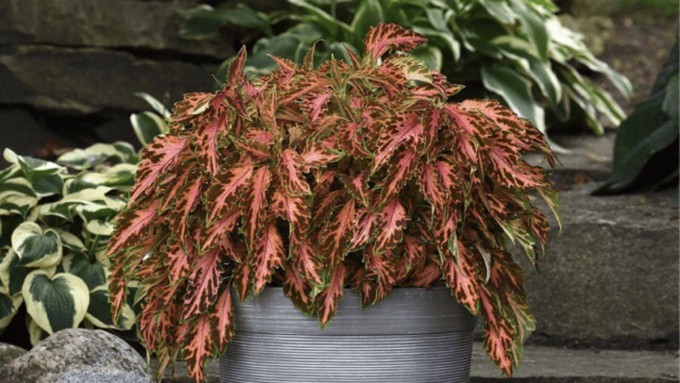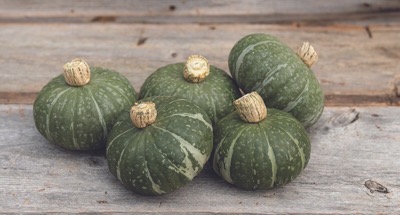
Coral-hued coleus, determinate jalapeño and new Roma-style tomato make the list

This AAS-winning Coral Candy coleus is part of the Premium Sun series hybridized by PanAmerican Seed. Courtesy All-America Selections
What’s coming to nurseries in 2023? Judging by these winners, we’ll be oohing over variegated foliage and aahing about orange snapdragons. Plus we’ll be mighty impressed by a pint-size kabocha squash and jalapeños that ripen all at once.
The All-America Selections (AAS) for 2023 were recently announced with national honors going to five flowers and vegetables plus a regional nod to a Midwest-oriented tomato (with Yolo County ties). These plants are expected to show up in nurseries and seed catalogs in time for planting next year.
All-America Selections also are featured in the demonstration gardens of the Fair Oaks Horticulture Center, tended by Sacramento County master gardeners.
AAS is considered “North America’s most well-known and respected non-profit plant trialing organization,” according to its website. “All AAS Winners are trialed throughout North America by professional, independent, volunteer judges who grow new, never-before-sold entries next to comparisons that are considered best-in-class. Only those entries that have superior garden performance, better than the comparisons, are granted the AAS award designation.”
And the winners are:
– Coral Candy coleus, part of the Premium Sun series hybridized by PanAmerican Seed. This is the first seed-grown coleus to win AAS honors in the Seed category. Its narrow, deeply serrated leaves combine a vivid shade of coral bordered with dark green. Says the AAS, “Just three seeds will produce enough substance to fill a 14- to 16-inch container!”
– Waikiki colocasia, part of the Royal Hawaiian series, bred by John Cho of the University of Hawaii. The first AAS-winning colocasia (better known as elephant ear or taro), Waikiki has striking tri-color leaves with pink veins, emerald green borders and creamy centers.
– DoubleShot Orange Bicolor snapdragon, from Hem Genetics. This All-American comes from The Netherlands and was a hit with stateside judges. “The stunning open-faced double flowers emerge in beautiful warm shades of orange and orange-red that transition to a dusty shade as they age,” say the judges.
– San Joaquin jalapeño pepper, from Bejo Seeds of Oceano in San Luis Obispo County. What makes this jalapeño different? It’s determinate, so all the fruit (50-plus per plant) ripen at one time. “Perfect for canning, pickling and making roasted stuffed jalapeños for a crowd,” says the AAS. “Judges loved the flavor of the thick-walled fruits that have just a hint of heat at 2500-6000 Scoville units.”

– Sweet Jade kaboocha squash, from Johnny’s Selected Seeds. “Each fruit is between 1 to 2 pounds and can be used for single servings of squash, as an edible soup bowl or in any number of Asian-style dishes where a sweet, earthy nutritious squash is typically used,” says AAS.
And because we have to have a tomato on this list, AAS added this Midwest Regional Winner (that also will grow well here in Sacramento):
– Zensei tomato, from Bayer Seminis Seeds. This may be a Midwest winner, but it has locally grown connections. Bayer Vegetable R&D is based in Woodland. Says the AAS, “Zenzei is an early-maturing, high-yielding Roma tomato … perfect for canning and freezing. Neat and tidy plants produce fruits that are uniformly shaped and are easy to harvest on unique bushy yet indeterminate plants.”
Look for these new varieties in nurseries and seed catalogs in 2023.
For more information: https://all-americaselections.org/about-aas-winners/.
Comments
0 comments have been posted.Sacramento Digs Gardening to your inbox.
Food in My Back Yard Series
May 6: Maintain soil moisture with mulch for garden success
April 29: What's (already) wrong with my tomato plants?
April 22: Should you stock up on fertilizer? (Yes!)
April 15: Grow culinary herbs in containers
April 8: When to plant summer vegetables
April 1: Don't be fooled by these garden myths
March 25: Fertilizer tips: How to 'feed' your vegetables for healthy growth
March 18: Time to give vegetable seedlings some more space
March 11: Ways to win the fight against weeds
March 4: Potatoes from the garden
Feb. 25: Plant a fruit tree now -- for later
Feb. 18: How to squeeze more food into less space
Feb. 11: When to plant? Consider staggering your transplants
Feb. 4: Starting in seed starting
Sites We Like
Garden Checklist for week of May 11
Make the most of the lower temperatures early in the week. We’ll be back in the 80s by Thursday.
* Plant, plant, plant! It’s prime planting season in the Sacramento area. Time to set out those tomato transplants along with peppers and eggplants. Pinch off any flowers on new transplants to make them concentrate on establishing roots instead of setting premature fruit.
* Direct-seed melons, cucumbers, summer squash, corn, radishes, pumpkins and annual herbs such as basil.
* Harvest cabbage, lettuce, peas and green onions.
* In the flower garden, direct-seed sunflowers, cosmos, salvia, zinnias, marigolds, celosia and asters. (You also can transplant seedlings for many of the same flowers.)
* Plant dahlia tubers.
* Transplant petunias, marigolds and perennial flowers such as astilbe, columbine, coneflowers, coreopsis, dahlias, rudbeckia and verbena.
* Keep an eye out for slugs, snails, earwigs and aphids that want to dine on tender new growth.
* Feed summer bloomers with a balanced fertilizer.
* For continued bloom, cut off spent flowers on roses as well as other flowering plants.
* Add mulch to the garden to maintain moisture. Mulch also cuts down on weeds. But don’t let it mound around the stems or trunks of trees or shrubs. Leave about a 6-inch-to-1-foot circle to avoid crown rot or other problems.
* Remember to weed! Pull those nasties before they set seed.
* Water early in the day and keep seedlings evenly moist.